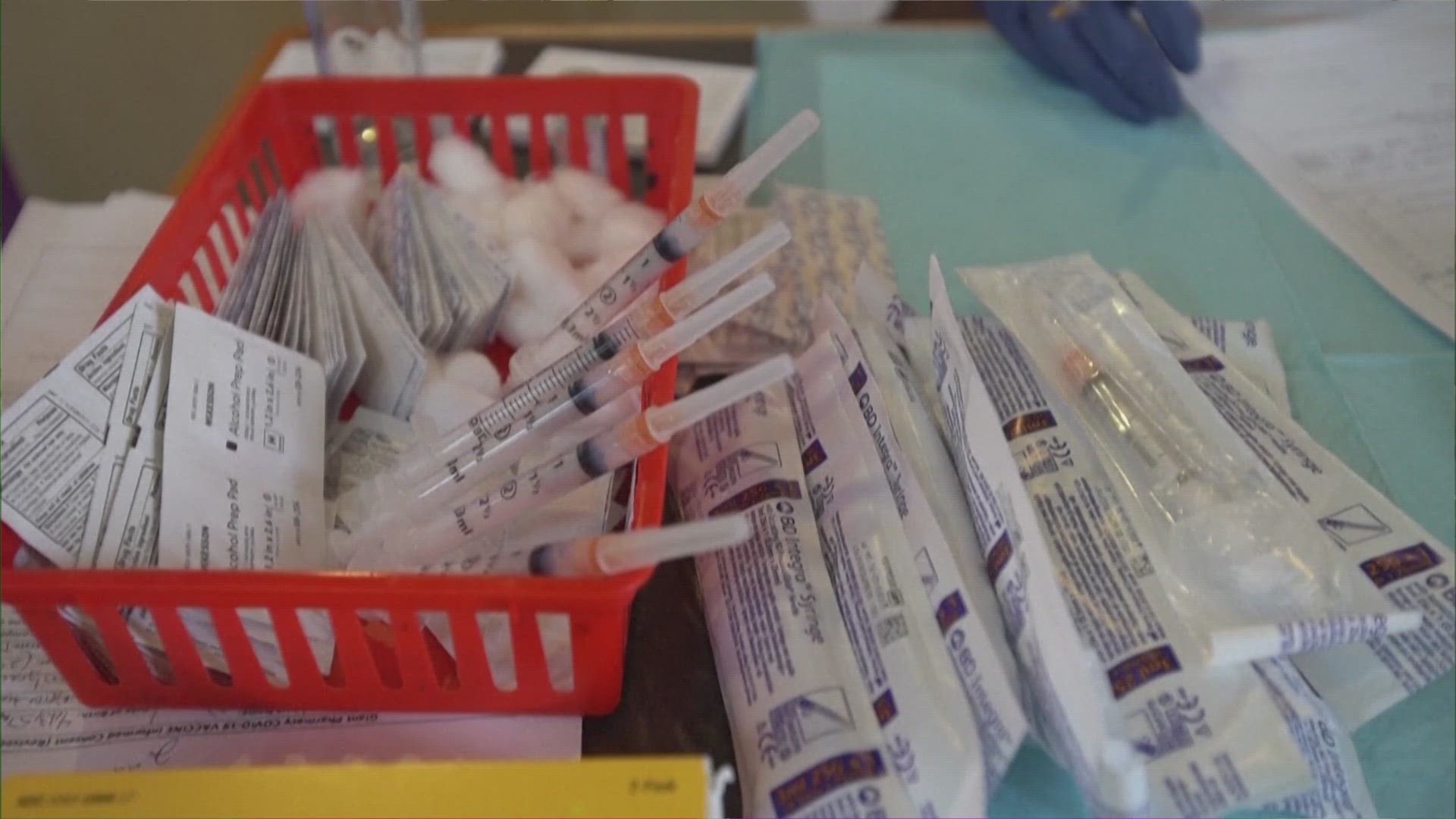SAN ANTONIO — We're tracking the latest numbers from the coronavirus pandemic in San Antonio and across Texas. Here are the latest numbers reported by Bexar and surrounding counties:
- Bexar County: 481 new cases and five fatalities from COVID-19 were reported Monday. There have been a total of 31,316 cases and 262 virus-related fatalities in the county.
- Comal County: 109 new cases were reported Saturday, the most recent day the county provided new COVID-19 numbers; two additional virus-related deaths were also reported in the county. There have been a total of 1,667 cases and 37 virus-related fatalities in Comal County.
- Hays County: As of July 20, the Hays County Local Health Department confirms there are at least 3,080 active lab-confirmed cases of COVID-19. Since Hays County first started providing numbers, a total of 3,979 lab-confirmed cases have been reported, including 17 deaths.
How Bexar County is trending:
We're tracking how many coronavirus cases are confirmed in Bexar County each day from the time San Antonio Metro Health began reporting cases more than two months ago. Graphing those daily case numbers along a 14-day moving average provides an accurate picture of the curve in the San Antonio area and the direction we're heading amid the coronavirus.
On Monday, Mayor Ron Nirenberg reported 491 additional coronavirus cases, bringing the total in Bexar County to 31,316. Five additional virus-related deaths were also reported; in all, 262 Bexar County residents have died from complications with the coronavirus.

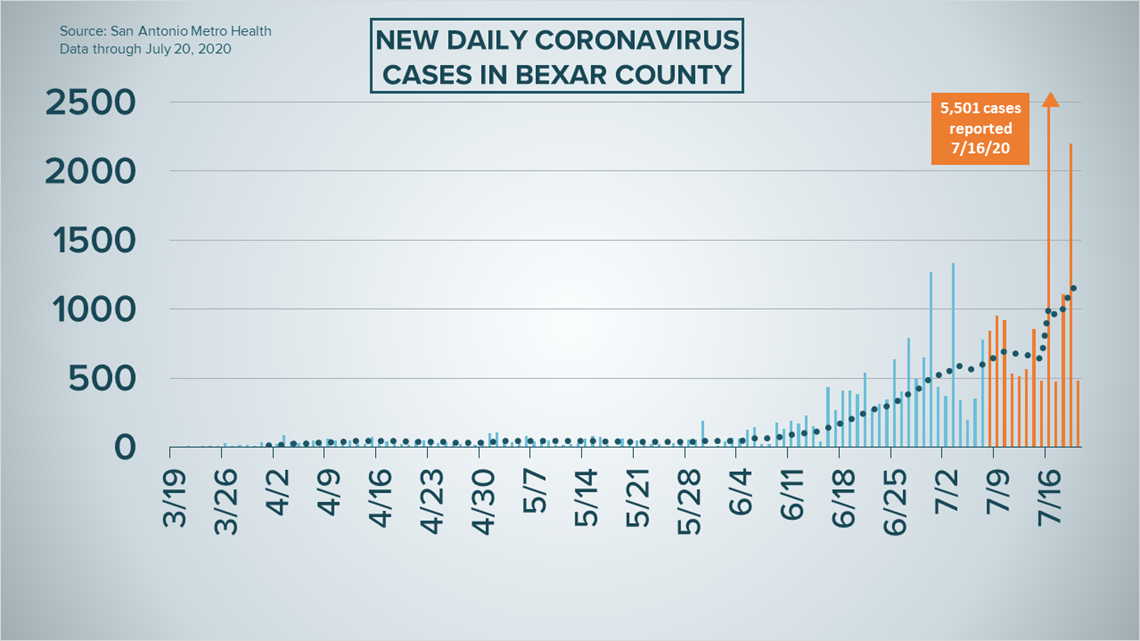
The number of Bexar County residents hospitalized with COVID-19 jumped to 1,193 Monday. There are 430 patients currently in the ICU, and 294 currently on ventilators.

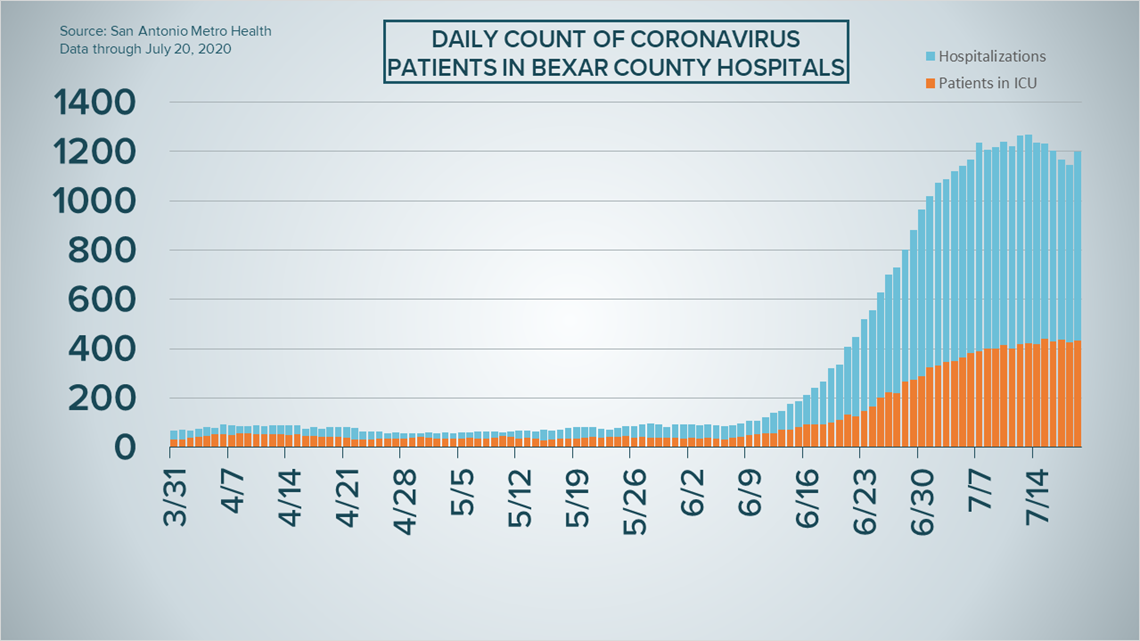
Mayor Nirenberg noted that pediatric coronavirus were on the rise on Bexar County; as of Friday, July 17, 11.2 percent of the county's COVID-19 cases are children.
San Antonio Metro Health reports the full daily numbers at 7 p.m.
Coronavirus in Texas
State health officials reported 7,404 newly-confirmed coronavirus cases on Monday. That raises the total number of COVID-19 cases in the ongoing pandemic to 332,434.

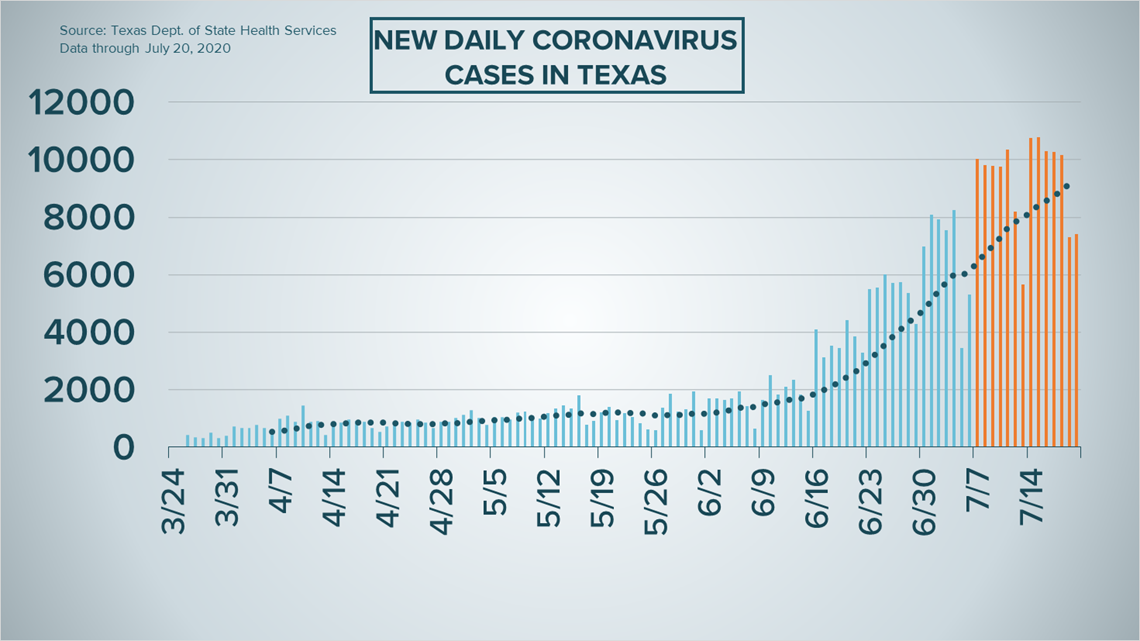
The state also reported an additional 62 virus-related deaths; in all, 4,020 Texans have lost their lives to the virus.


The number of patients in Texas hospitals dropped slightly to 10,569 on Monday. On Saturday, a record-high 10,658 Texans were being treated in facilities for the virus.

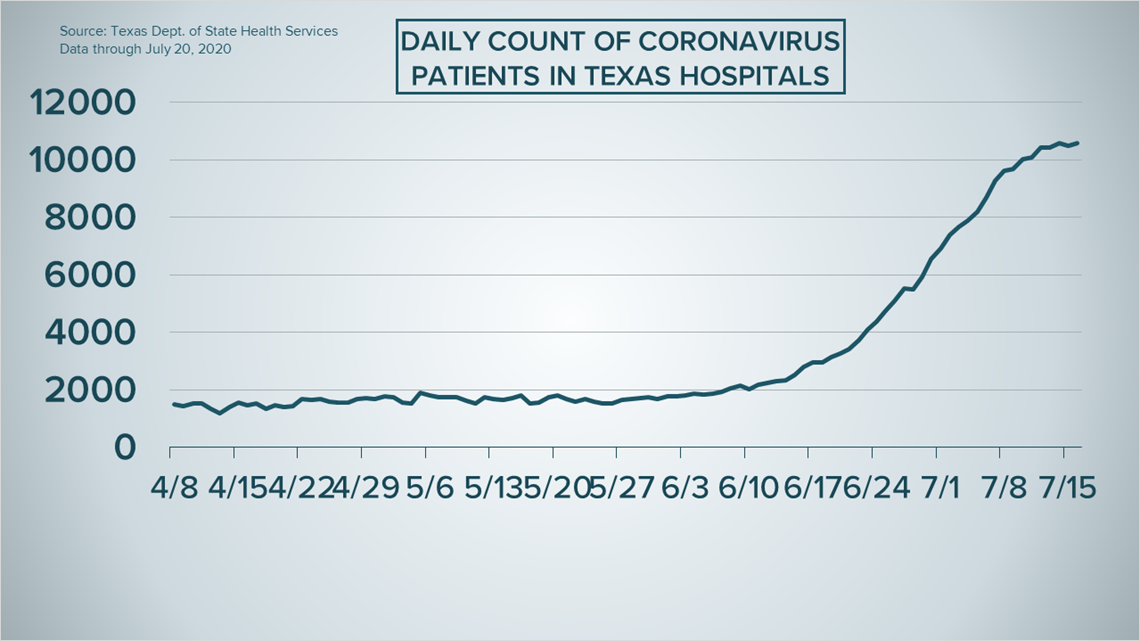
State health officials estimate 15,0543 Texans are still battling the coronavirus, while 177,871 have recovered.
Latest Coronavirus Headlines
- Corpus Christi officials report the COVID-19 related death of a six-week-old infant
- Trump faces divisions with Senate GOP on virus aid
- Hays County reports 3,080 active COVID-19 cases, 17 deaths
- Health officials report eight COVID-19 related deaths in Nueces County on Monday, July 20.
- Funeral plans announced for Bexar County official who died from coronavirus
- Texas budget faces a $4.6 billion deficit, state comptroller projects
- Two more deaths and 10 more cases of COVID-19 reported
- Petco and PetSmart join list of businesses requiring face masks
- White House to resume daily COVID-19 briefings
Coronavirus symptoms
The symptoms of coronavirus can be similar to the flu or a bad cold. Symptoms include fever or chills, cough, shortness of breath or difficulty breathing, fatigue, muscle or body aches, headache, new loss of taste or smell sore throat, congestion or runny nose, nausea or vomiting and diarrhea, according to the Centers for Disease Control.
Most healthy people will have mild symptoms. A study of more than 72,000 patients by the Centers for Disease Control in China showed 80 percent of the cases there were mild.
But infections can cause pneumonia, severe acute respiratory syndrome, kidney failure, and even death, according to the World Health Organization. Older people with underlying health conditions are most at risk.
On June 25, the CDC expanded the list of groups at a higher risk of severe illness due to coronavirus.
Experts determined there was consistent evidence these conditions increase a person's risk, regardless of age:
- Chronic kidney disease
- COPD (chronic obstructive pulmonary disease)
- Obesity (BMI of 30 or higher)
- Immunocompromised state (weakened immune system) from solid organ transplant
- Serious heart conditions, such as heart failure, coronary artery disease, or cardiomyopathies
- Sickle cell disease
- Type 2 diabetes
The CDC believes symptoms may appear anywhere from two to 14 days after being exposed.
Human coronaviruses are usually spread...
- Between people who are in close contact with one another (within about 6 feet).
- Through respiratory droplets produced when an infected person coughs, sneezes or talks. These droplets can land in the mouths or noses of people who are nearby or possibly be inhaled into the lungs.
- Some recent studies have suggested that COVID-19 may be spread by people who are not showing symptoms.
Help stop the spread of coronavirus
- Stay home when you are sick.
- Eat and sleep separately from your family members
- Use different utensils and dishes
- Cover your cough or sneeze with your arm, not your hand.
- If you use a tissue, throw it in the trash.
Lower your risk
- Wash your hands often with soap and water for at least 20 seconds. If soap and water are not available, use an alcohol-based hand sanitizer.
- Avoid touching your eyes, nose, and mouth with unwashed hands.
- Avoid close contact with people who are sick.
- Clean and disinfect frequently touched objects and surfaces.
- The CDC recommends wearing a mask or cloth face covering if you have to be out due to an essential service or essential activity such as going to the grocery store.
- If you are 60 or over and have an underlying health condition such as cardiovascular disease, diabetes or respiratory illnesses like asthma or COPD, the World Health Organization advises you to try to avoid crowds or places where you might interact with people who are sick.



